
|
Astronomy Picture Of the Day (APOD)
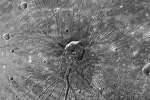 A Spider Shaped Crater on Mercury
A Spider Shaped Crater on Mercury
4.02.2008
Why does this crater on Mercury look like a spider? When the robotic MESSENGER spacecraft glided by the planet Mercury last month, it was able to image portions of the Sun's closest planet that had never been seen before.
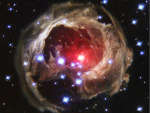 Light Echoes from V838 Mon
Light Echoes from V838 Mon
3.02.2008
What caused this outburst of V838 Mon? For reasons unknown, star V838 Mon's outer surface suddenly greatly expanded with the result that it became the brightest star in the entire Milky Way Galaxy in January 2002. Then, just as suddenly, it faded.
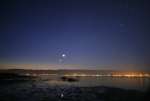 Venus and Jupiter in Morning Skies
Venus and Jupiter in Morning Skies
2.02.2008
These two celestial beacons shining brightly in the east before sunrise are actually children of the Sun, the planets Venus and Jupiter. The second and third brightest objects in the sky at Night after...
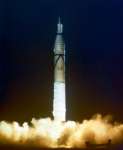 The First Explorer
The First Explorer
1.02.2008
Fifty years ago (on January 31, 1958) the First Explorer, was launched into Earth orbit by the Army Ballistic Missile Agency. Inaugurating the era of space exploration for the United States, Explorer I was a thirty pound satellite that carried instruments to measure temperatures, and micrometeorite impacts, along with an experiment designed by James A.
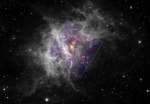 Young Star Cluster Westerlund 2
Young Star Cluster Westerlund 2
31.01.2008
Dusty stellar nursery RCW 49 surrounds young star cluster Westerlund 2 in this remarkable composite skyscape from beyond the visible spectrum of light. Infrared data from the Spitzer Space Telescope is shown in black...
 Asteroid 2007 TU24 Passes the Earth
Asteroid 2007 TU24 Passes the Earth
30.01.2008
Asteroid 2007 TU24 passed by the Earth yesterday, posing no danger. The space rock, estimated to be about 250 meters across, coasted by just outside the orbit of Earth's Moon. The passing...
29.01.2008
What does Mars look like from here? Last September, before hiking across rugged and slippery terrain to reach its winter hibernation point, the robotic Spirit rover climbed a small plateau known as Home Plate and captured the spectacular vista pictured above.
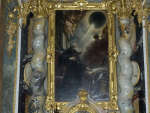 A Solar Eclipse Painting from the 1700s
A Solar Eclipse Painting from the 1700s
28.01.2008
Is this painting the earliest realistic depiction of a total eclipse of the Sun? Some historians believe it is. The above painting was completed in 1735 by Cosmas Damian Asam, a painter and architect famous in early eighteenth century Germany.
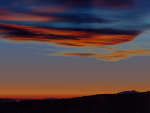 Mercury on the Horizon
Mercury on the Horizon
27.01.2008
Have you ever seen the planet Mercury? Because Mercury orbits so close to the Sun, it never wanders far from the Sun in Earth's sky. If trailing the Sun, Mercury will be visible low on the horizon for only a short while after sunset.
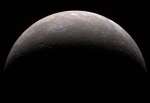 Crescent Mercury in Color
Crescent Mercury in Color
26.01.2008
Hard to spot against the twilight glow near planet Earth's horizon, a crescent Mercury was imaged close up by the MESSENGER spacecraft early last week. Colors in this remarkable picture were created using data recorded through infrared, red, and violet filters.
|
January February March April May June July August September October November December |
|||||||||||||||||||||||||||||||||||||||||||||||||